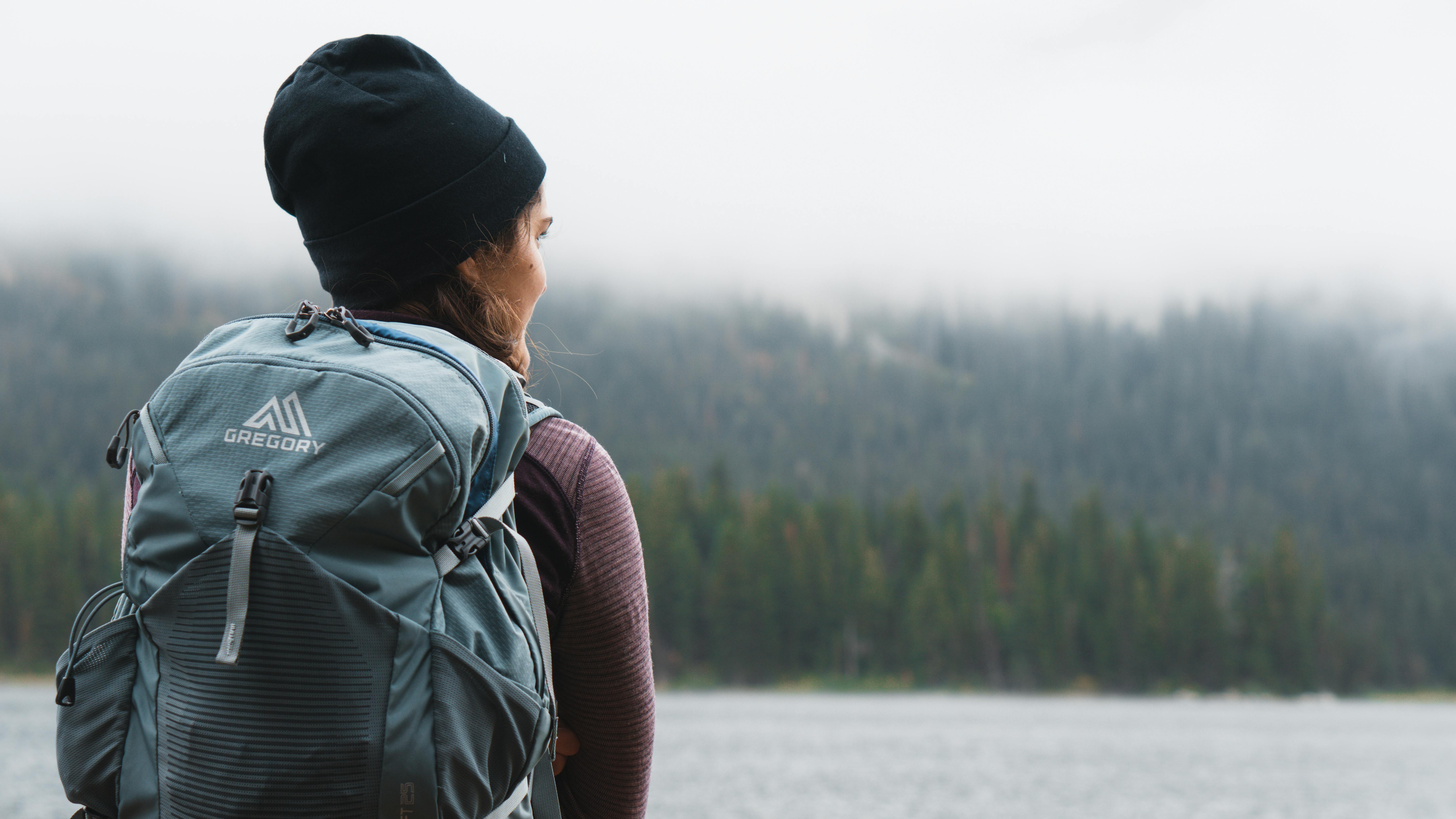What To Wear In The Snow

The snow is a beautiful sight to behold, but it can also be cold and uncomfortable. Knowing what to wear in the snow is essential to staying warm and comfortable while enjoying the winter activities. Layering your clothing, choosing the right fabrics, and protecting your extremities are all important components of dressing for the snow. With a few simple tips, you can stay cozy and warm while playing in the snow.If you are going to be spending time in the snow, it is important to dress appropriately. Layering is key when it comes to dressing for the cold. Start with a moisture-wicking base layer such as long underwear or a thermal top and bottom. Add a mid-layer of fleece or wool for insulation and top off with a waterproof outer shell such as a jacket and snow pants. Accessorize with warm winter boots, a hat, scarf, gloves and sunglasses.
Choosing The Right Outerwear
Outerwear is an important part of any wardrobe. It not only protects you from the elements, but it also plays a large role in your overall appearance. When it comes to choosing the right outerwear, there are several things to consider.
First and foremost, you should always choose an outerwear that fits you properly. If your outerwear is too tight or too loose, it won’t look good and won’t provide the necessary protection from the weather. Make sure to try on different sizes and styles until you find one that fits well.
Along with fit, you should also consider style when selecting your outerwear. Think about the occasion or type of event that you’re attending and choose an outfit that complements it. If it’s a casual event, a lightweight jacket or hoodie may be appropriate, while a more formal event may call for a blazer or coat.
Finally, don’t forget to think about the material of your outerwear. Different materials offer different levels of insulation and protection from both wind and rain. Consider the climate in which you live when making your selection so that you can find something that will keep you comfortable year-round.
Layering For Cold Weather
Layering is essential for cold weather. Layering helps keep you warm by trapping your body heat and keeping the cold out. It also allows you to adjust your clothing as the temperature changes throughout the day. The key to layering is to choose fabrics that are lightweight, breathable, and moisture-wicking. Start with a base layer of lightweight synthetic or wool fabric such as polyester, merino wool, or silk. This will help keep you warm and dry even when you start to sweat. Next, add a middle layer of insulation such as fleece or down for extra warmth. Finally, add an outer layer of waterproof protection such as a waterproof jacket or coat to protect against wind and rain.
When layering for cold weather, it’s important to consider how many layers you need depending on the temperatures outside and how active you will be. If it’s very cold outside and you plan on being active, choose more layers that are lighter. If it’s not as cold outside and you will be less active, choose fewer layers with thicker fabrics for maximum warmth. There are many options when it comes to layering for cold weather so take some time to find the right combination that works best for you!
Keeping Feet Warm
Staying warm in cold temperatures is essential to protect yourself from the elements. Keeping your feet warm is a crucial part of staying healthy and comfortable in colder temperatures. There are several steps that can be taken to ensure your feet stay warm in colder climates.
The first step to keeping your feet warm is to wear the right type of shoes or boots for the environment you are in. Shoes or boots that are made for cold weather should be insulated and waterproof, so they can keep your feet protected from the elements. Additionally, you should wear thick socks with your shoes or boots that will provide extra insulation against the cold air.
Another way to keep your feet warm is to invest in a good pair of thermal socks. Thermal socks are specially designed for cold weather and provide extra insulation and warmth for your feet. If you plan on spending time outdoors in colder temperatures, thermal socks are a great option for keeping your feet warm.
Finally, if you’re feeling really brave, another way to keep your feet warm is by submerging them in hot water. This might sound strange, but it can actually work if done correctly. Fill a basin with hot water and submerge your feet up to your ankles for about 10 minutes at a time until you start feeling some warmth radiating through them. Keep an eye on the temperature of the water – it should be hot but not scalding – and make sure not to stay submerged for too long.
Keeping your feet warm is important when you’re dealing with cold weather conditions, so make sure you take all of these steps into consideration before heading out into the elements!
Mittens or Gloves?
When it comes to keeping your hands warm during cold weather, mittens and gloves are two of the most popular options. But which one is better for you? Ultimately, that will depend on your needs and preferences.
Mittens tend to offer more warmth than gloves because they keep the fingers close together rather than separated in individual compartments as with gloves. This allows the body heat generated by the fingers to be shared between them, providing a greater overall warmth. Mittens also provide more flexibility when it comes to movement since all of your fingers can move as one unit, whereas with gloves each finger has its own compartment and so movements are more restricted.
Gloves do have their advantages though. They provide more dexterity than mittens because each finger has its own compartment and so individual movements are easier to accomplish. Gloves also allow you to keep your hands warm while still having the ability to use touchscreens like smartphones or tablets without having to take them off.
In terms of cost, mittens tend to be cheaper than gloves since they require less material and fewer pieces of fabric for construction. However, if you need a higher level of dexterity then you may need to pay a bit more for a pair of gloves that provides that capability.
So when it comes down to it, mittens or gloves will really depend on your needs and preferences when it comes to keeping your hands warm during cold weather. Both offer different benefits and drawbacks depending on what activities you plan on doing while wearing them.

A Hat That Keeps You Warm
Staying warm in winter is essential and a good hat is the perfect way to do it. A hat that keeps you warm can help protect you from the cold weather and keep you comfortable. It’s an essential item for any winter wardrobe. There are a variety of hats available to suit any style, from stylish beanies to practical trapper hats.
When looking for a hat that keeps you warm, look for materials like wool or fleece which are both thick and insulating fabrics. Make sure the material is breathable as well, so you don’t get too hot and sweaty while wearing it! If possible, choose one with ear flaps or a chin strap to keep it secure on windy days.
It’s also important to check how well the hat is made – look for seams that are neat and tight, as this will help keep out any cold draughts. Look for good quality craftsmanship, as this will ensure your hat lasts longer and remains warm even after many wears.
A good hat that keeps you warm can be found at most stores – try a few on until you find one that fits snugly and looks great too! With the right care and attention, your hat should last for years and provide plenty of warmth during those cold winter months.
Don’t Forget Accessories
Accessories can really bring a look together. Shoes, jewelry, hats, scarves, and other accessories can add the perfect finishing touch to any outfit. Without them, outfits may feel incomplete or unfinished. Accessories are the perfect way to show off one’s unique style and make a statement.
It is important to find accessories that match one’s existing wardrobe and style. A good rule of thumb is to look for pieces that are versatile enough to go with many different outfits. If a piece of jewelry or accessory only goes with one item in the wardrobe, it may not be the best pick.
When it comes to accessories, quality matters. Investing in quality pieces will pay off in the long run because they will last longer and look great doing it. High quality materials such as leather or sterling silver will go further than cheaper materials like plastic or costume jewelry.
Accessories can also be used to add a touch of color or texture to an outfit. A pop of color like a bright scarf or bold necklace can really make an outfit stand out without being too flashy. Texture can also be added with items like fur vests or suede booties for an interesting element that looks stylish and unique.
Don’t forget accessories when getting ready for the day! They are an essential part of any outfit and can really take it from ordinary to extraordinary!
Finding the Right Snow Boots For Maximum Comfort
Winter is here and you need to make sure that you are ready for it with the right snow boots. When it comes to snow boots, comfort is key. You want to be able to wear them for long periods of time without feeling uncomfortable. But how do you find the right pair of snow boots that will provide maximum comfort? Here are some tips to help you out.
First, look for a boot with a good fit. This means that it should fit snugly around your ankle and calf, but not be too tight or restrictive. Also, make sure there is enough room in the toe box so your feet won’t feel cramped when walking in the snow.
Second, look for snow boots with waterproof materials and insulation. This will keep your feet dry and warm in cold weather conditions. The materials should also be breathable so that moisture can escape and your feet won’t overheat.
Third, choose a boot with plenty of cushioning. This will provide extra cushioning and support when walking on hard surfaces such as ice or packed snow. Look for boots with memory foam or air cushioned insoles for added comfort.
Fourth, choose a boot with good traction on the sole. This will help prevent slips and falls on icy surfaces or deep snow drifts. Look for soles made from rubber or other non-slip materials.
Finally, consider adding an extra layer of warmth with insulated liner socks or insoles to your boots if needed. Adding an extra layer of insulation can help keep your feet warm in extreme cold temperatures.
Following these tips will help you find the perfect pair of snow boots that provide maximum comfort this winter season!

Conclusion
When it comes to dressing for the snow, layers are key. The best way to keep yourself warm and dry is to start with a moisture-wicking base layer, then add an insulation layer such as fleece or wool. Top it off with a waterproof outer layer, as well as appropriate accessories like hats, scarves, gloves, and boots. Remember, your goal is to stay warm and dry while having fun in the snow!
When selecting clothes for snow activities like skiing and snowboarding, make sure you pick items designed for that specific activity. Ski apparel should be lightweight and breathable to keep you comfortable while you’re on the slopes. Snowboarding apparel should be durable enough to withstand falls and spills.
No matter what winter activity you’re engaging in, proper clothing is essential for staying warm and safe outdoors. When you’re picking out clothes for a day in the snow, remember to layer up for maximum warmth and protection from the elements. Make sure each item of clothing fits properly so that you can move freely without risking exposure or discomfort in cold temperatures. With a little planning ahead of time, you can have a great time outdoors without worrying about being cold or wet!
